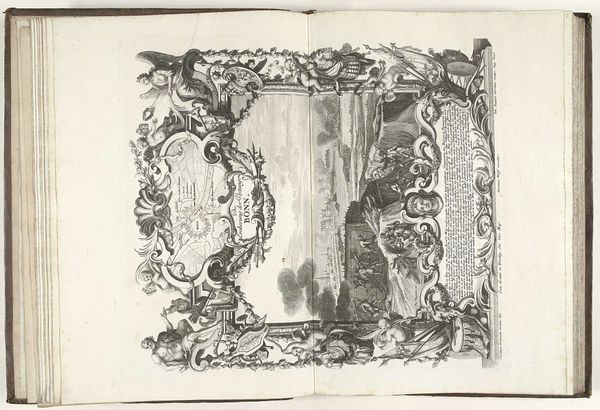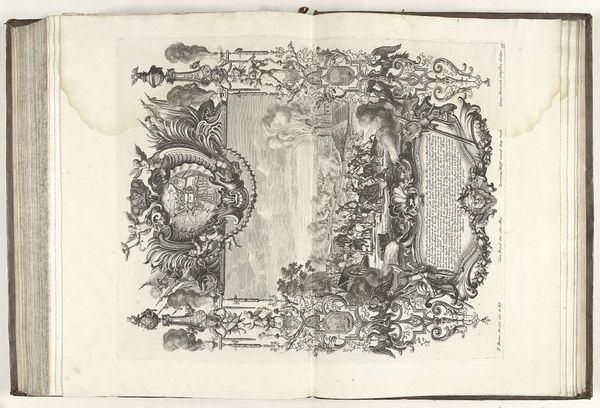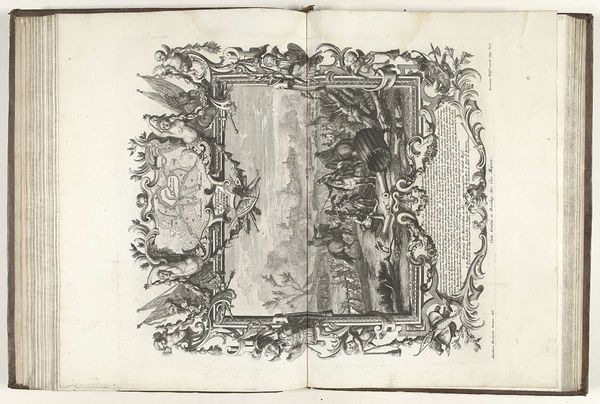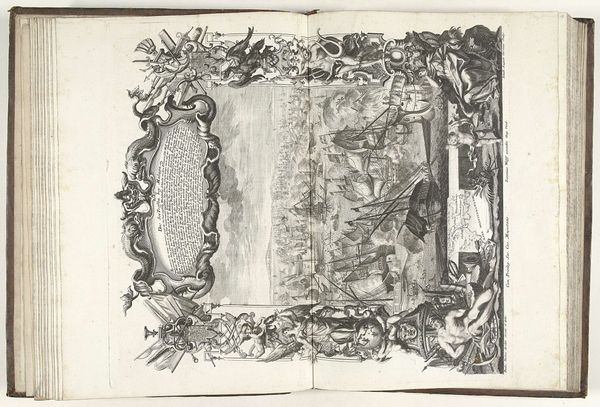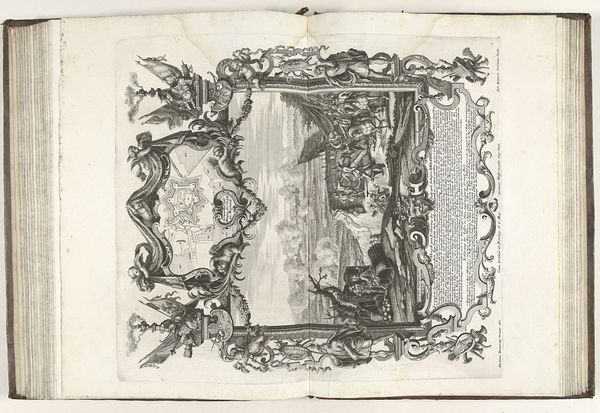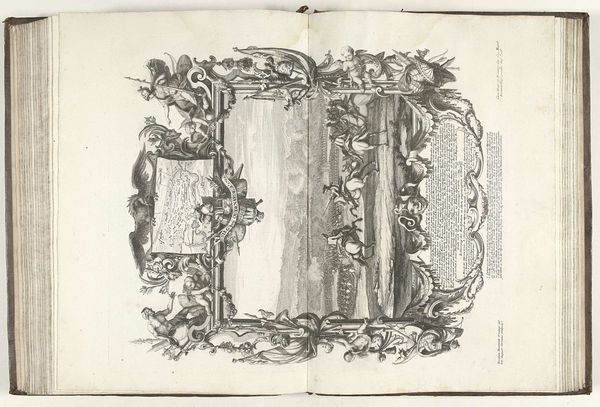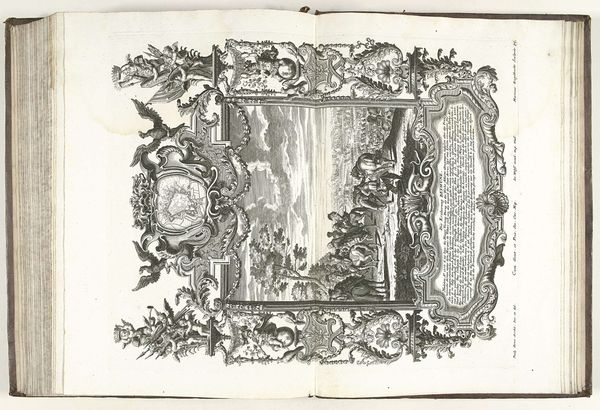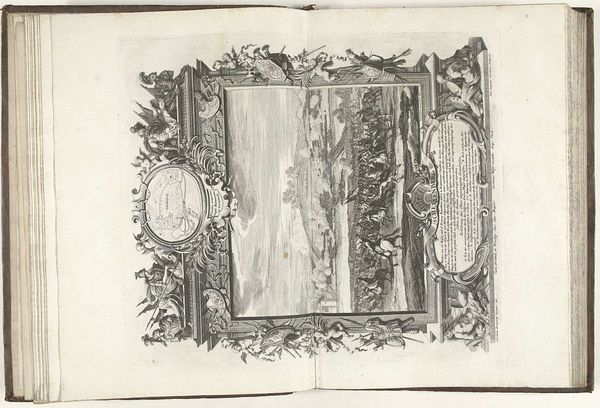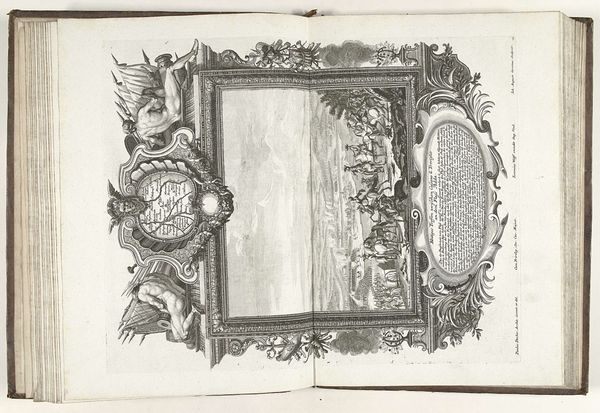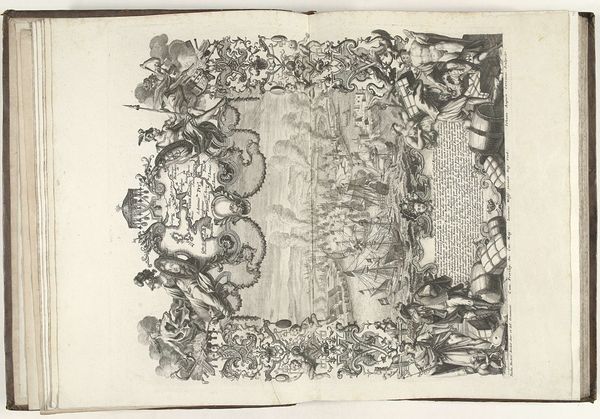
drawing, print, ink, engraving
#
drawing
#
narrative-art
#
baroque
# print
#
figuration
#
form
#
ink
#
line
#
history-painting
#
engraving
Dimensions: height 425 mm, width 370 mm
Copyright: Rijks Museum: Open Domain
This is Jacob Andreas Fridrich's engraving 'Slag bij Ramillies, 1706', a print on paper. The design has two distinct halves, with an image on the left and accompanying text on the right, both framed with ornate embellishments. Engraving is an intaglio process, meaning the image is incised into a plate, typically copper. The plate is then inked, and the surface wiped clean, leaving ink only in the incised lines. High pressure forces paper into these lines, transferring the image. This allows for incredibly fine details and textures, as we see in the chaotic battle scene. The use of engraving speaks to a culture of reproduction and dissemination of information. Prints like these were crucial for spreading news and commemorating events like battles. The labor-intensive process also highlights the economic aspects of art production, with skilled engravers playing a vital role in the distribution of information and propaganda. Considering the material and process, we realize that this print is not just an image, but a product of skilled labor, technology, and social context. It reflects a time when art served as a powerful tool for communication and commemoration.
Comments
No comments
Be the first to comment and join the conversation on the ultimate creative platform.
